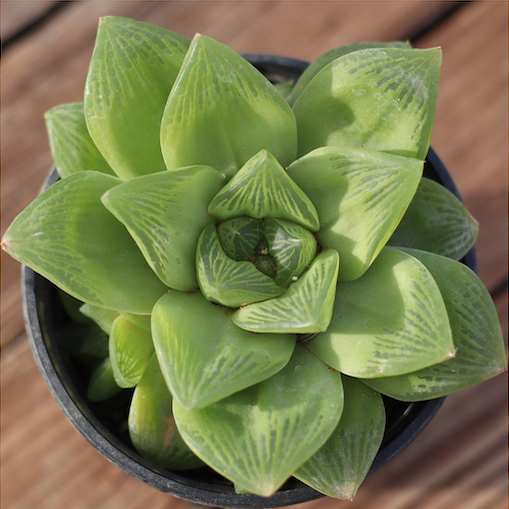If you’ve ever wandered through the succulent section of a nursery, you’ve likely been drawn to the chubby leaves, geometric patterns, and endless variety of shapes and sizes. Among these intriguing plants is the lesser-known Haworthia—a charming and underrated succulent that quietly stands apart from the more popular echeverias, aloes, and sedums.
While Haworthia species share many traits with other succulents—compact rosettes, water-storing leaves, and a tolerance for dry conditions—they also come with their own personality and preferences. If you’ve struggled with sun-loving succulents in your home, Haworthia might be just the plant you’ve been looking for.
Light Requirements: A Key Difference
Most succulents, especially echeverias and sedums, crave full sun. They stretch toward light when grown indoors and are happiest basking in bright windows or on sunny patios. Haworthia, on the other hand, thrives in indirect light or even partial shade. Native to the shaded underbrush of South Africa, Haworthia is well adapted to dappled light and lower-light conditions that might stress other succulents.
This makes Haworthia ideal for indoor growing. A bright room or east-facing window will usually provide all the light it needs. Direct afternoon sun can actually scorch its leaves, a problem not typically seen with tougher aloes or sun-worshipping echeverias.
Care and Growth Habits
When it comes to water, Haworthia follows the typical succulent rule: less is more. Let the soil dry out completely between waterings, and avoid letting water sit in the rosette. However, since it often grows more slowly than other succulents, it uses water more gradually, meaning you may water it even less frequently than your other succulent varieties.
Unlike sprawling sedums or fast-spreading kalanchoes, Haworthia tends to stay compact. It rarely outgrows its container and doesn’t need frequent repotting. Its slow, controlled growth and tidy rosette shape make it perfect for small spaces, windowsills, or terrariums.
Texture and Appearance
One of Haworthia’s most appealing traits is its variety in texture. Some species, like Haworthia fasciata, feature striking white horizontal stripes on dark green leaves, earning the nickname “zebra plant.” Others, like Haworthia cooperi, have translucent, jelly-like leaf tips that almost glow in the right light. This diversity adds visual interest that complements the smoother, more pastel-toned echeverias and jade plants.
In Summary
If you love the look of succulents but have struggled with keeping them happy indoors, Haworthia is worth a try. Its tolerance for low light, slow growth, and unique textures make it both beginner-friendly and beautiful. While other succulents may thrive in bright sun and open spaces, Haworthia is content in the quiet corners, adding charm without demanding attention.
So next time you're choosing a succulent, consider giving this shade-loving underdog a home—it just might be your easiest plant companion yet.
